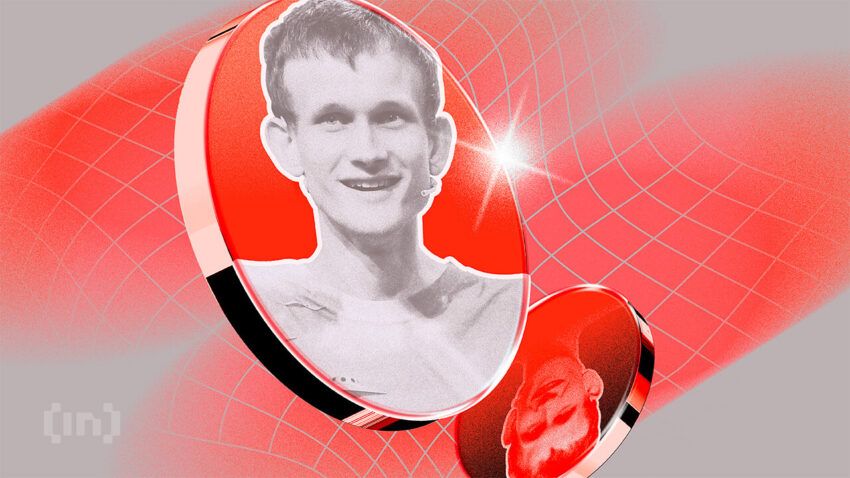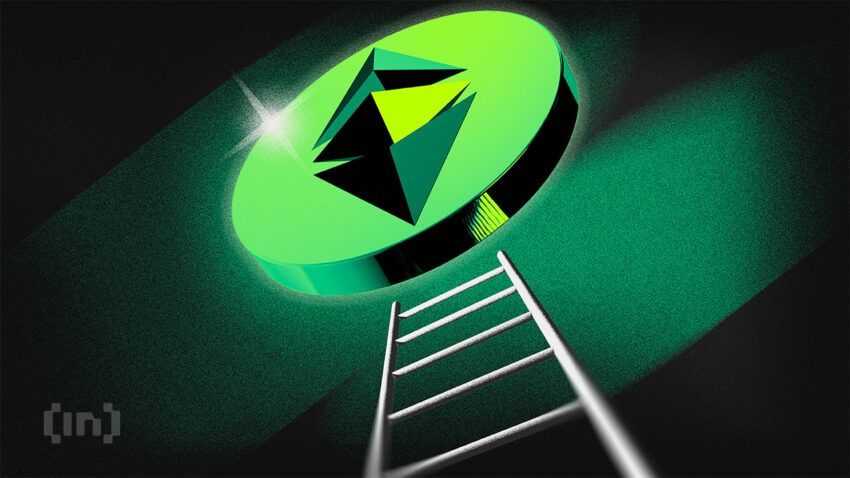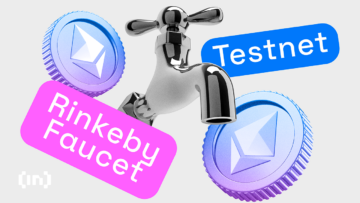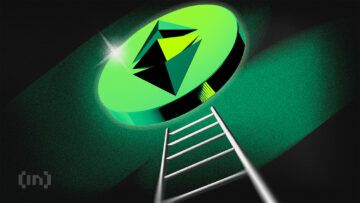Vitalik Buterin, the co-founder of Ethereum, has played a major role in the crypto space. Vitalik’s vision and technical expertise have brought success to the Ethereum network while helping to shape the entire blockchain sector. Read on to learn about Buterin, his contributions, and his visions for the future of Ethereum.
- Who is Vitalik Buterin?
- What does Vitalik do?
- Why is Vitalik Buterin important?
- How did Vitalik Buterin start working on Ethereum?
- What are some of the challenges Buterin has faced?
- Ethereum to Ethereum 2.0: The transition
- Vitalik Buterin: Approach, thoughts and views
- Who controls Ethereum now?
- Ethereum’s visionary: The impact of Vitalik Buterin
- Frequently asked questions
Who is Vitalik Buterin?
Vitalik Buterin is the co-founder of the Ethereum network, a decentralized blockchain and development platform. Born in Kolomma, Russia, on Jan. 31, 1994, Vitalik’s family left for Canada to seek better employment opportunities. At the time they left, he was six years old.
Education
Vitalik’s exceptional abilities led to his enrollment in a gifted program in the third grade at a Canadian primary school. He had distinct programming skills and an early interest in economics. Buterin demonstrated remarkable mathematical prowess. Despite his academic talents, he was distant from social events and extracurricular activities, earning him the reputation of a math prodigy.
Outside academics, Buterin enjoyed playing World of Warcraft from 2007 to 2010. However, his experience with the game was altered when the game’s developer, Blizzard, nerfed his highly prized favorite character. That was when he realized flaws in centralized systems, prompting him to quit.
Following high school, Buterin enrolled at the University of Waterloo, pursuing advanced courses and serving as a research assistant for Ian Goldberg, a known cryptographer. Goldberg, known for co-creating Off-the-Record Messaging and his involvement with the Tor Project, mentored Buterin during this time. In 2012, Buterin achieved further recognition by winning the bronze medal at the International Olympiad in Informatics held in Italy.
Net worth
Vitalik’s net worth is reportedly around $1.025 billion as of June 13, 2024. The majority of his wealth is attributed to his ETH holdings. Vitalik Buterin currently holds 278,524 ETH (~$1M) and 256 WETH ($919K), making him one of the largest holders of ETH.
Achievements
Vitalik Buterin has achieved a lot throughout his career. In 2014, Buterin was awarded the Thiel Fellowship, a prestigious grant that allowed him to focus on developing Ethereum. The following year, Buterin’s groundbreaking work on Ethereum earned him the World Technology Award in the IT Software category. This award celebrated his contributions to technology and innovation, solidifying his reputation as a visionary within the industry.
In addition, Buterin was included in Fortune magazine’s esteemed “40 under 40” list in 2016, acknowledging his leadership and impact as a young innovator.
In June 2017, Vitalik Buterin met with Russian President Vladimir Putin during the St. Petersburg International Economic Forum. The meeting was aimed at discussing the economic significance of Ethereum for Russia.
In 2018, Buterin received further recognition for his achievements. Forbes featured him in its “30 under 30” list, highlighting his exceptional accomplishments and potential across various industries. He was also honored with an honorary doctorate from the University of Basel for his contributions to blockchain and Ethereum. Additionally, in 2018, the Ethereum community honored Buterin’s dedication with the Vitalik Buterin Community Award, recognizing his unparalleled commitment to advancing and growing the Ethereum ecosystem.
His influence extended beyond the industry, evidenced by his inclusion in Time magazine’s Time 100 list in 2021, honoring his global contributions to technology and cryptocurrencies.
Philanthropy
Vitalik Buterin’s philanthropic efforts have been quite transparent. In October, Buterin clarified on his social platforms that when articles suggest that he is selling ETH, the transactions are made by charities, non-profits, or other projects to cover fees associated with his donations. He added that he has not sold any ETH for personal gains since 2018.
In 2021, Buterin donated over $1 billion in crypto to various charities, including the India Covid Relief fund. The funds came from selling dog-themed meme coins he was gifted by the creators of Akita Inu (AKITA), Shiba Inu (SHIB) and Dogelon (ELON).
Buterin established Kanro, his charitable entity, to combat pandemics. He focused on addressing the challenges posed by COVID-19. Kanro’s publicly known address holds approximately 75 million USDC stablecoins.
In addition to Kanro, Buterin has made donations, primarily in ether. Some recipients were 13,292 ETH to GiveWell, a charity evaluator, 1,000 ETH, and 430 billion ELON tokens to the Methuselah Foundation, which is focused on extending the human lifespan. He also donated 1050 ETH to the Machine Intelligence Research Institute, which aims at safe AI technologies.
What does Vitalik do?
Vitalik Buterin is primarily known as the co-founder of Ethereum, the second-largest crypto by market cap. Since launching Ethereum, Vitalik has remained a central figure in its development. He is the platform’s public face, contributes to its technical direction, and advocates for its adoption.
Buterin also has a background in computer science. His programming skills were instrumental in building Ethereum, and he continues to be a thought leader and advisor in blockchain technology. Apart from that, as outlined above, Vitalik has been involved in charitable contributions, particularly medical research and global health initiatives.
Why is Vitalik Buterin important?
Vitalik Buterin is important for co-founding Ethereum. Ethereum introduced smart contracts, which are self-executing agreements that have opened doors to various applications beyond just crypto. Beyond Ethereum, Buterin is a prominent figure in blockchain and crypto. His technical knowledge and vision for the future of the technology are widely respected.
At 30, Buterin has become a significant figure in the crypto industry, often compared to Satoshi Nakamoto in significance. His contributions have solidified his position as a key player in shaping the future of the crypto space.
How did Vitalik Buterin start working on Ethereum?
In 2011, seeking a new direction, Buterin stumbled upon Bitcoin. Initially skeptical due to its lack of physical backing, he gradually became intrigued as he looked deeper into its workings and potential.
Desiring to participate actively in this sector, Buterin looked to acquire Bitcoin but lacked the resources to mine or purchase them outright. Instead, he turned to online forums, where he began writing articles for a blog, earning approximately 5 BTC per piece.
Buterin explored crypto’s economic, technological, and political dimensions. His writings caught the attention of Mihai Alisie, a fellow Bitcoin enthusiast based in Romania. This led to the creation of the Bitcoin Magazine, which Buterin co-founded in late 2011. Juggling writing, travel, and crypto work for over 30 hours weekly, Buterin decided to leave university.
What motivated him?
Buterin traveled the world researching various altcoins. He deduced that existing projects were too narrowly focused and lacked versatility. Buterin believed that a successful blockchain should have more applications and more adaptability. He recognized the potential for generalizing the protocols already in place and used Turing-complete programming languages to develop the idea of Ethereum. Despite initial rejections from existing projects, he created the network and wrote the Ethereum whitepaper.
In early 2014, Buterin collaborated with a group of visionaries, including Gavin Wood, Anthony Di Iorio, Charles Hoskinson, and Joseph Lubin, to establish Ethereum. Together, they initiated an initial coin offering (ICO) campaign to finance the platform’s development, offering ETH coins in exchange for contributions.
The campaign exceeded expectations, raising over $18 million in Bitcoin. With the funding, Ethereum began developing the platform, focusing on enabling smart contracts and decentralized applications. Ethereum introduced Solidity, a new programming language for writing smart contracts.
In July 2015, Ethereum launched the Frontier network, its initial implementation. Since then, the ETH ecosystem has undergone multiple upgrades, including the Metropolis, Constantinople, Istanbul hard forks, and the Ethereum Merge, enhancing its capabilities and scalability.
What are some of the challenges Buterin has faced?

Vitalik Buterin has encountered several technical challenges throughout Ethereum’s development. Ethereum is a complex, secure, and scalable platform that has had technical challenges. Some of these that Buterin has addressed are ensuring smart contract security, achieving scalability in handling high transaction volumes and balancing decentralization with efficiency.
“Layer 2 solutions are pivotal, as they enhance scalability and reduce transaction costs, which in turn makes Ethereum more accessible and efficient for a broader user base. Also the increasing adoption of stablecoins on the Ethereum network significantly bolsters its utility as a financial infrastructure.”
Miguel Buffara, Lead Financial Engineer at RACE: BeInCrypto interview
Since everything on a public blockchain is transparent, user privacy has also been a major point of discussion. Balancing the need for transparency with the desire for anonymity has been an ongoing effort.
The Ethereum blockchain developed use cases such as decentralized applications (DApps) and decentralized autonomous organizations (DAOs). However, the launch of the DAO in April 2016 caused a significant setback.
Intended to revolutionize crowdfunding, the DAO quickly raised around $150 million in ETH. However, vulnerabilities in its codebase led to an exploit, resulting in the theft of 3.6 million ETH, roughly $50 million at the time.
In response, Vitalik Buterin decided to fork the Ethereum network to stop the hack and restore the stolen funds. The inability to reconcile these differences led to the Ethereum blockchain splitting into two separate chains: Ethereum (ETH) and Ethereum Classic (ETC). Ethereum moved forward with the fork to recover the stolen funds, while Ethereum Classic remained on the original blockchain.
ETH became more popular over time and attracted the support of the Enterprise Ethereum Alliance, which had over 200 members, including JP Morgan and Citigroup.
Ethereum to Ethereum 2.0: The transition

Vitalik Buterin recognized that Ethereum’s proof-of-work (PoW) version led to soaring Ethereum gas fees, making transactions too expensive for many users. This delay prompted Buterin to acknowledge that Ethereum’s transition to a proof-of-stake (PoS) consensus mechanism would take six years instead of the projected one.
To address the need for improved transaction throughput and congestion management, Ethereum adopted sharding as part of the Ethereum 2.0 upgrade (Merge). Sharding divides the network into shard chains, distributing the load and aiming to boost transaction throughput and relieve congestion.
The Merge integrated Ethereum’s original mainnet with its new proof-of-stake Beacon Chain. This transition eliminated energy-intensive mining and enabled the network to be secured through staked ETH.
However, Buterin and his team’s adoption of a more centralized approach has departed from the decentralized strategy previously favored by Ethereum community members. In addition, holders’ expectations have shifted, viewing ETH as an investment asset rather than a decentralized currency.
Did you know? The name Ethereum was inspired by a medieval theory about an invisible, all-pervasive substance called “aether.”
Vitalik Buterin: Approach, thoughts and views
In a student testimonial at Abelard School, Vitalik Buterin reiterated his experience working on Ethereum and in the crypto industry in general:
“I am truly grateful to have the opportunity to work in such an interesting and interdisciplinary area of industry, where I have the chance to interact with cryptographers, mathematicians, and economists prominent in their fields to help build software and tools that already affect tens of thousands of people around the world and to work on advanced problems in computer science, economics, and philosophy every week.”
Vitalik Buterin
Buterin’s involvement in blockchain projects beyond Ethereum, like L4 and Plasma Group, signals his interest in contributing to the emerging metaverse.
In a July 2022 post on X, Buterin criticized Meta Platform’s CEO, Mark Zuckerberg, suggesting corporate attempts to create the metaverse might fail. Buterin believes it’s too early to define the metaverse and that any current attempts may misfire. Given Ethereum’s role as the foundation for various developments such as DeFi, NFTs, and stablecoins, it’s unsurprising that Buterin expects the network to lead in the metaverse space.
Buterin also sees the Ethereum Name Service (ENS) ecosystem as providing web3 usernames for crypto addresses and decentralized websites and enabling cross-platform identities for users and items. He believes ENS offers solutions that many people overlook.
Buterin is fascinated by Zero-Knowledge Succinct Non-Interactive Argument of Knowledge (zk-SNARKs), a cryptographic proof allowing a party to prove possession of specific information without revealing it. This eliminates the need for interaction between the prover and verifier. Buterin predicts zk-SNARKs will become the most widely used privacy-preserving technology in the next three decades. He calls it a potential revolution as it becomes mainstream in the next 10-20 years.
Buterin has outlined future plans for Ethereum, such as implementing sharding for scalability (the Surge), introducing Verkle trees for efficiency (The Verge), reducing storage requirements (The Purge), and enhancing quantum resistance (the Splurge).
Who controls Ethereum now?
Ethereum operates as a decentralized blockchain platform built by developers worldwide. No single entity controls it. While the Ethereum Foundation was important in creating the initial infrastructure and continues to support development, control over the network has shifted to the larger Ethereum community.
Ethereum’s decentralized governance model ensures that no single entity or individual, including the Ethereum Foundation or Vitalik Buterin, can unilaterally change the platform. Instead, decisions are made collectively by the community, which includes developers, node operators, and ETH holders.
The network’s success relies on the participation of the community members. They perform activities such as staking and securing the network through node operations and ETH holdings. With hundreds of thousands of developers contributing to the platform’s ongoing development, Ethereum remains a decentralized and collaborative ecosystem.
Ethereum Improvement Proposals, or EIPs, allow the community to propose improvements to the network. Any crypto community member can submit EIPs via GitHub. Once proposed, they undergo discussion and review by the Ethereum community, including editors, for approval.
In addition, forum members and Ethereum enthusiasts engage in discussions, providing feedback to the proposal’s author. EIPs can cover various aspects of the Ethereum network. An example of this is changes to the ERC-20 technical standard, which governs Ethereum transactions.
Ethereum’s visionary: The impact of Vitalik Buterin
Vitalik Buterin has played a significant role in Ethereum’s development and evolution. As co-founder and leader, he has spearheaded updates such as Ethereum 2.0, which transitioned the network to proof-of-stake and propelled Ethereum to the forefront of the blockchain revolution. Beyond Ethereum contributions, Buterin’s commitment to innovation has been a driver in transforming the blockchain space.
Frequently asked questions
Who is Vitalik Buterin?
Why is Vitalik Buterin important?
What inspired Vitalik Buterin to create Ethereum?
How did Vitalik Buterin contribute to blockchain technology?
What awards has Vitalik Buterin won?
How is Vitalik Buterin influencing current blockchain innovations?
What is Vitalik Buterin’s vision for the future of Ethereum?
What is Vitalik Buterin famous for?
How rich is Vitalik?
What is Vitalik Buterin’s IQ?
Who owns the most Ethereum?
Who are the five founders of Ethereum?
How many ETH does Vitalik have?
Trusted
Disclaimer
In line with the Trust Project guidelines, the educational content on this website is offered in good faith and for general information purposes only. BeInCrypto prioritizes providing high-quality information, taking the time to research and create informative content for readers. While partners may reward the company with commissions for placements in articles, these commissions do not influence the unbiased, honest, and helpful content creation process. Any action taken by the reader based on this information is strictly at their own risk. Please note that our Terms and Conditions, Privacy Policy, and Disclaimers have been updated.




